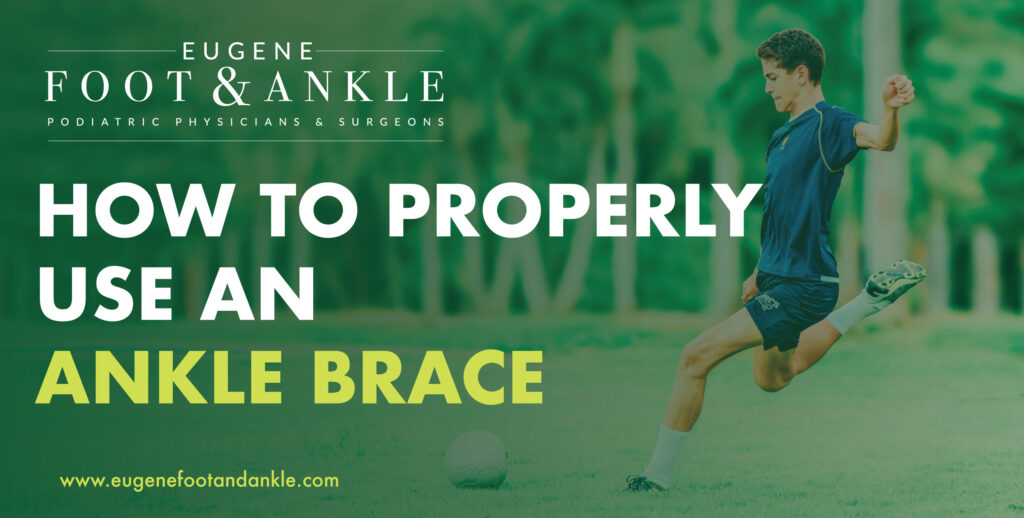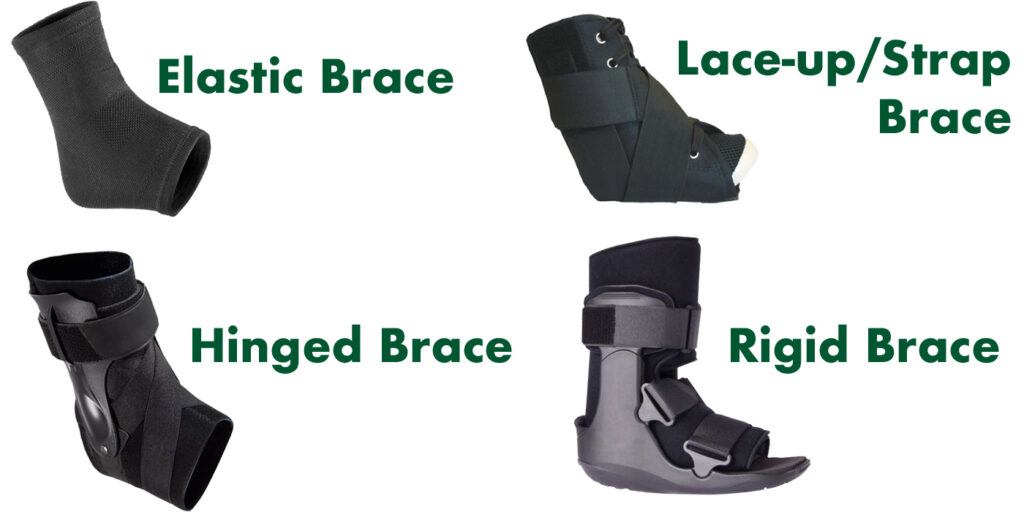How to Properly Use an Ankle Brace
Ankle injuries are some of the most common musculoskeletal injuries children and adults sustain each year. In fact, the National Institute of Health estimates that roughly 2 million people will sprain their ankles each year. Although injuries to the ankle frequently result from sports injuries, damage to cartilage, and tears or strains in tendons, they may also result from walking on an uneven surface, tripping, falling, or from a vehicular or bicycle accident. With an estimated 25,000 people injuring their ankles each day, it’s no wonder there are many different types of braces available. Here’s what you need to know about properly using an ankle brace.

Types of Ankle Braces
There are different styles of ankle braces available. Each type of brace provides specific support or protection. If you’re unsure what is causing your ankle pain, it’s best to see a foot and ankle specialist for an accurate diagnosis and to ensure you select the right brace.
- Elastic Brace
An elastic brace, also known as a compression brace or elastic sleeve, provides light, flexible support, making them ideal for injury prevention. Your podiatrist may also recommend an elastic brace if you’re suffering from tendonitis, as the compression helps to keep the ankle joint warm while reducing swelling. Compression braces allow a full range of motion in the ankle while providing support.
- Lace-up or Strap Braces
These braces offer more support than an elastic sleeve but are only semi-rigid. If your ankle specialist recommends a lace-up ankle brace, it is likely because you’ve experienced a mild or moderate ankle sprain. Lace-up braces will limit up and down and side-to-side movement in the joint.
- Hinged Braces
If your doctor recommends a hinged brace, they want you to limit side-to-side movement while allowing up and down motion in the ankle. Hinged braces are typically padded on the sides and secured to the foot with Velcro.
- Hard-Shelled or Rigid Ankle Brace
Hard-shelled braces that protect the ankle with air-filled or gel-filled padding are recommended if you’ve recently suffered an acute ankle injury. These devices are very popular post-surgery braces and are also used to provide stability to individuals who suffer from chronic ankle instability.

How Does an Ankle Brace Work?
Ankle braces support the joints, tendons, muscles, and bones in and around the ankle. They are used to accomplish four primary goals:
- Protecting the ankle during recovery from an injury or surgery
- Supporting an unstable ankle
- Reducing swelling and pain in the ankle
- Preventing future or further injury to the ankle.
Ankle Pain Unrelated to an Injury
The most obvious symptom of an ankle injury is pain. People who sprain or fracture their ankle will experience acute pain. However, others may notice pain coming on gradually, or swelling in the ankle, even without an identifiable injury. Common problems that may develop in the ankle that are unrelated to an acute injury include:
- Bursitis
If the bursa (the fluid-filled sac that serves as a cushion of r the bones, tendons, and joints in the ankle) becomes inflamed, you may notice swelling and tenderness near your ankle.
- Achilles Tendon Injuries
Inflammation or degeneration of the Achilles tendon, which connects your heel to your calf muscle, can result in ankle pain.
- Arthritis
Osteoarthritis, rheumatoid arthritis, gout, and reactive arthritis can all leave your ankle aching, even if you haven’t suffered an injury.
- Fallen Arches
If the tendons that run along the arch of your feet are injured or damaged, you may develop a condition known as fallen arches which can cause ankle pain.
- Osteochondral Lesion of the Talus (OLT)
This condition results from damage to the cartilage and the lower bone in the ankle (talus) due to a previous injury. In addition to ankle pain, you may hear a clicking or popping sound in your ankle when you rotate it.
Treatment for Ankle Pain in Eugene
If you’re experiencing ankle pain that is not resolving after icing and resting the ankle, schedule an appointment at Eugene Foot and Ankle by calling 541-683-3351. Our experienced, Board-Certified podiatrists will provide an accurate diagnosis and custom treatment plan to help you recover as quickly and thoroughly as possible.
Contact Us
Eugene
Hours:
Monday............ 8:00am - 5:00pm
Tuesday............ 8:00am - 5:00pm
Wednesday............ 8:00am - 5:00pm
Thursday............ 8:00am - 5:00pm
Friday............ 8:00am - 4:00pm (Only available on phones)
Closed for lunch from 12pm - 1pm and closed until 1:30pm on Tuesdays
© Copyright 2025 Eugene Foot and Ankle. All Rights Reserved. | Privacy Policy.
